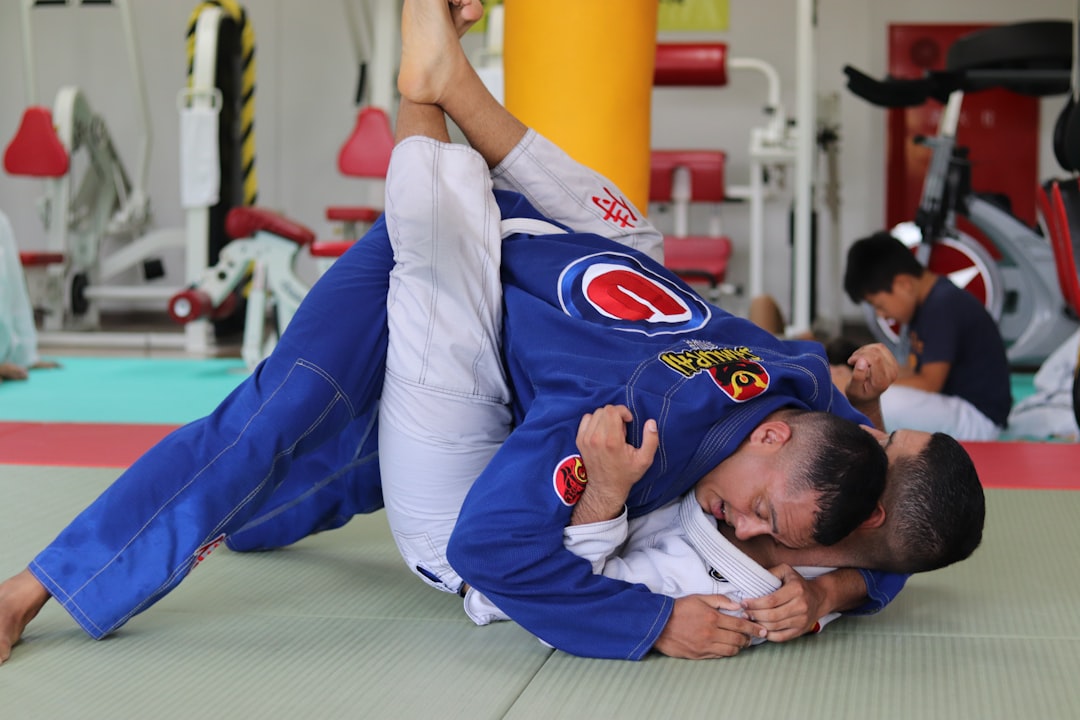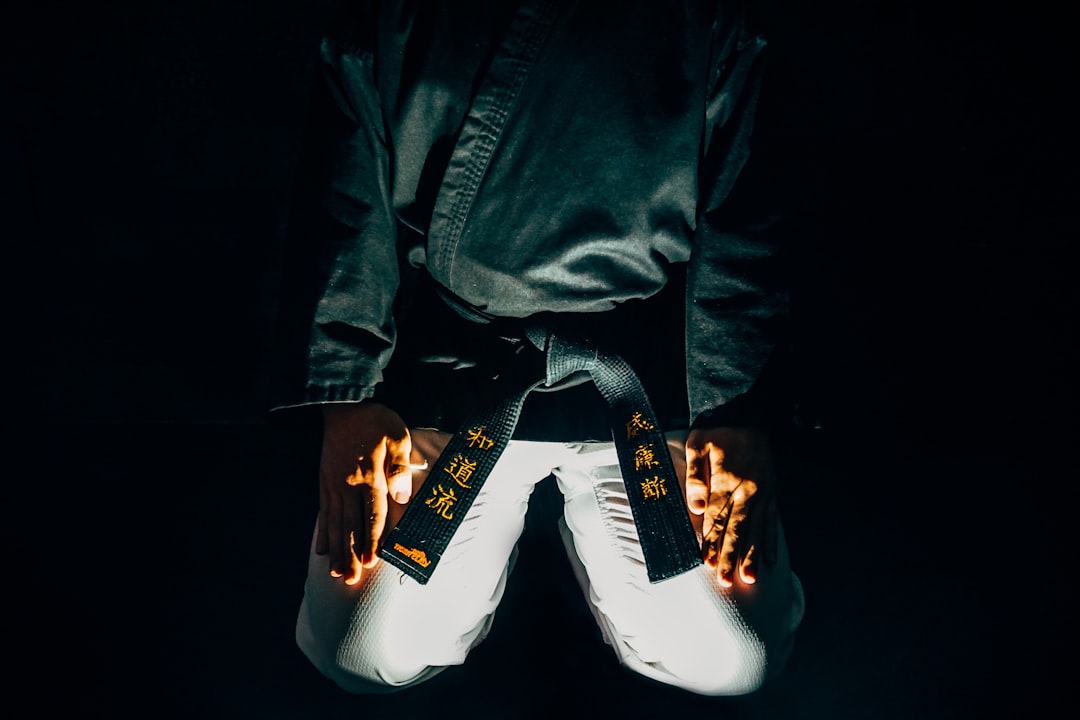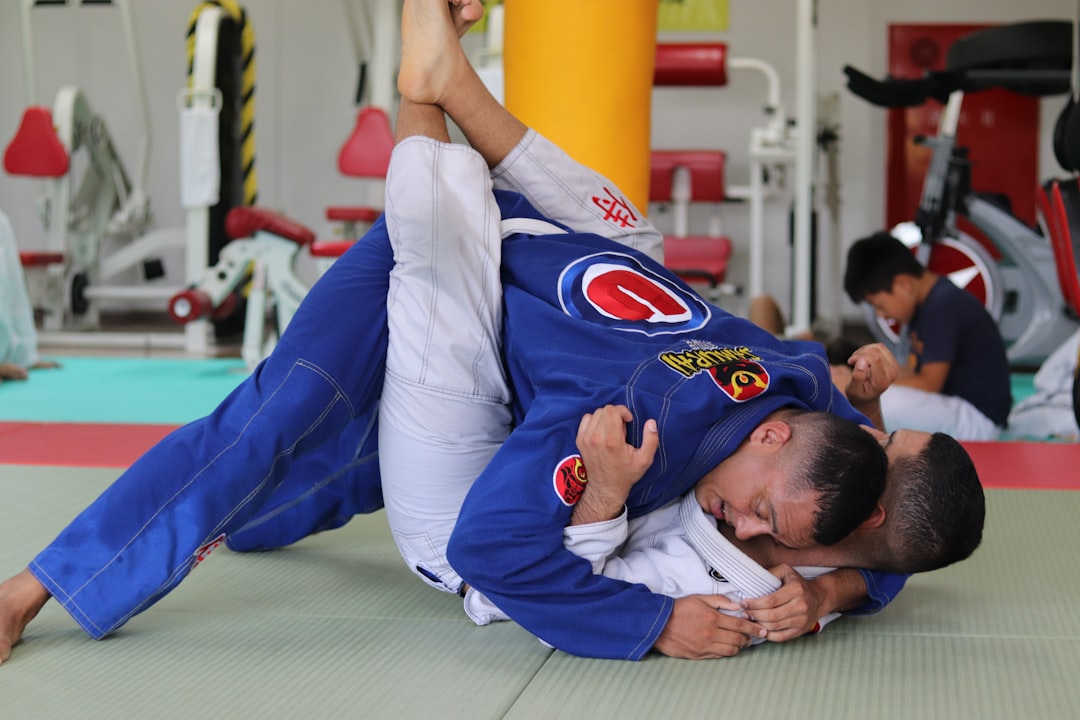When training karate at home, having the right gear, specifically a high-quality karate gi, is crucial for mastering form and technique. The gi not only unifies practitioners in appearance but also enhances movement and skill execution. It's designed with comfort and functionality in mind, offering a balance of durability and flexibility for sustained training. Selecting the right size and weight of the gi ensures it doesn't hinder performance or catch on objects. Proper care, including gentle machine washing with specialized detergent and air drying, is vital to maintain the gi's condition and respect the martial art's traditions. Regular inspections for wear and tear can help prolong its lifespan. By following these guidelines, karateka can uphold the integrity and respectability of their training attire and honor the discipline's heritage while effectively training karate at home.
Exploring the essence of traditional martial arts practice, an integral aspect is the garb that practitioners don – the karate uniform, commonly known as a gi. This article delves into the specifics of this essential attire, guiding readers through understanding its significance, dissecting its components, and selecting the perfect gi for home karate training. From the fabric’s choice to maintenance tips, master your home training environment with insights on caring for your gi, ensuring it withstands the rigors of practice over time. Keywords like ‘train karate home’ will be woven throughout the piece to enhance your understanding and enhance your training experience.
- Understanding the Karate Uniform: The Gi's Role in Training at Home
- The Anatomy of a Karate Gi: Material, Fit, and Functionality for Effective Practice
- Tips for Selecting the Right Gi for Home Karate Training
- Caring for Your Gi: Maintenance and Upkeep for Long-Term Use
Understanding the Karate Uniform: The Gi's Role in Training at Home

When practicing karate at home, having the right equipment is crucial to ensure proper form and technique. One such essential piece of equipment is the karate uniform, commonly known as a gi. The gi plays a vital role in karate training, both at home and in a dojo setting. It provides a standardized outfit that all practitioners can wear, facilitating a unified appearance and a sense of community among karateka. The fabric of the gi offers minimal restriction on movement, which is essential for executing techniques with precision. Additionally, the weight and texture of the gi help karatekas understand and adapt to different textures and weights in preparation for sparring against opponents wearing various types of clothing. Training in a gi at home also acclimates practitioners to the feel of their uniform during competition or grading, ensuring familiarity with their attire as they progress through their training.
To effectively train karate from the comfort of your own space, it’s important to consider how the gi responds to different movements and how it can influence your technique. For instance, how does the gi move when you perform a kata or execute a punch? Does it hinder or aid your ability to maintain balance and posture? The answers to these questions are vital for anyone looking to refine their skills at home. Properly understanding the role of the gi in your training can lead to better execution of movements and a more authentic practice experience, closely mirroring that of training in a traditional dojo. This knowledge is particularly beneficial when performing solo drills or recording sessions for review and self-improvement.
The Anatomy of a Karate Gi: Material, Fit, and Functionality for Effective Practice

When practicing karate at home or in a dojo, the garment that practitioners don is known as a Karate Gi. This traditional uniform plays a pivotal role in the martial art experience, offering more than just a blank canvas for belts and patches; it serves as a practical tool for both training and ceremonial purposes. The fabric of a Karate Gi is typically constructed from heavy cotton or hemp blend materials, which are both durable and breathable, ensuring comfort during rigorous training sessions. These materials also facilitate the grip needed when sparring, allowing partners to grasp each other effectively while maintaining safety.
The fit of a Karate Gi is designed to be slightly loose, enabling a full range of motion for executing various kata and techniques with ease. This relaxed yet structured fit accommodates different body types, offering a universal comfort without hindering the practitioner’s movement or flexibility. Additionally, the functionality of a Karate Gi extends beyond mere attire; it is specifically tailored to withstand the repetitive motions inherent in karate practice, ensuring longevity and durability. The design often includes reinforced knees and stress-resistant seams to endure the rigors of daily training whether one is practicing at home or in a dedicated training environment. How does the material of a Karate Gi affect the practitioner’s experience during training? The heavy cotton or hemp blend materials used in a traditional Karate Gi are breathable and durable, which helps maintain comfort while allowing for a firm grip during sparring. Why is the fit of a Karate Gi important for effective practice? A looser fit provides a full range of motion, accommodates various body types, and ensures unobstructed movement for performing karate techniques effectively.
Tips for Selecting the Right Gi for Home Karate Training

When training karate at home, selecting the appropriate Gi is crucial for both comfort and adherence to traditional practices. The Gi, a fundamental part of a martial artist’s attire, not only helps in recognizing rank but also ensures that you have the mobility needed to execute techniques effectively. Does the fabric of the Gi allow for unrestricted movement? A high-quality Gi made from a blend of cotton and polyester is often preferred as it strikes a balance between durability and flexibility. Is the Gi’s fit tailored for your body type? It should be snug yet not overly tight, allowing for ease of motion without being loose enough to catch on objects or cause distractions during practice. Additionally, consider the weight of the Gi; a heavier weave can provide more resistance, which is beneficial for certain training methods. How will you maintain your Gi? Proper care ensures its longevity and cleanliness, which are essential for both hygienic reasons and maintaining respect for the martial art’s traditions. When purchasing a Gi for home karate training, remember to check the sizing guide provided by the manufacturer to ensure a perfect fit, as sizes can vary between brands. Is the Gi available in a color that reflects your personal preference or the style of your dojo? Typically, white is the most traditional and widely accepted color for a Gi, but some schools may have specific requirements or allow for different colors. Ultimately, choosing the right Gi for home karate training involves balancing comfort, functionality, and respect for the martial art’s customs.
Caring for Your Gi: Maintenance and Upkeep for Long-Term Use

When training karate at home, maintaining your gi—the traditional karate uniform—in peak condition is crucial for both performance and respect for the martial art’s heritage. To ensure your gi remains in top shape over time, regular maintenance and careful upkeep are essential. Start by washing your gi after every session to remove perspiration and bacteria that can cause odor and damage the fabric. Should you opt for machine washing, use a gentle cycle with cool water and a mild detergent designed for athletic wear to prevent shrinking or damaging the material. It’s also wise to avoid using fabric softeners, as they can reduce the gi’s ability to absorb sweat, impairing its functionality during practice.
After washing, air drying your gi is the best method to preserve its shape and integrity. Hanging it to dry while it’s still damp can lead to unwanted creases or stretching of the fabric. If you must use a dryer, set it on a low heat to minimize shrinkage. Additionally, regularly inspect your gi for any tears or wear that may occur over time. Patching these up promptly will prevent further damage and ensure your uniform remains respectable and functional for your training sessions. By following these care instructions, your gi can serve you well for an extended period, allowing you to train karate at home with the proper attire that signifies both respect for the art and readiness for practice.
In wrapping up our exploration of the essential elements of a karate practitioner’s regimen, it’s clear that the garment commonly referred to as a ‘karate uniform’ is more precisely termed a ‘Gi’. This article has delved into the significance of the Gi within the practice of karate, both at home and in formal dojos. From its material composition to the nuances of fit and functionality, understanding how to select and maintain a Gi is paramount for effective training. As one trains karate at home, the right Gi supports performance and durability, ensuring that each movement is executed with precision and respect for the martial art’s traditions. By following the care guidelines outlined in our maintenance section, practitioners can preserve their Gi, allowing it to serve as a consistent and reliable partner in their ongoing training journey. Whether at home or in a dojo, the Gi is not just a uniform; it’s an integral component of the karate experience.
